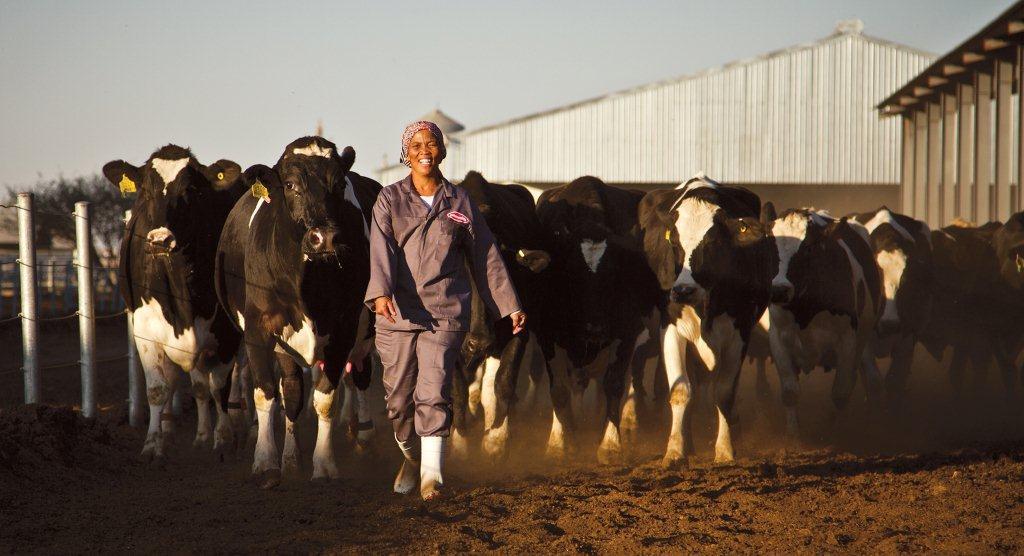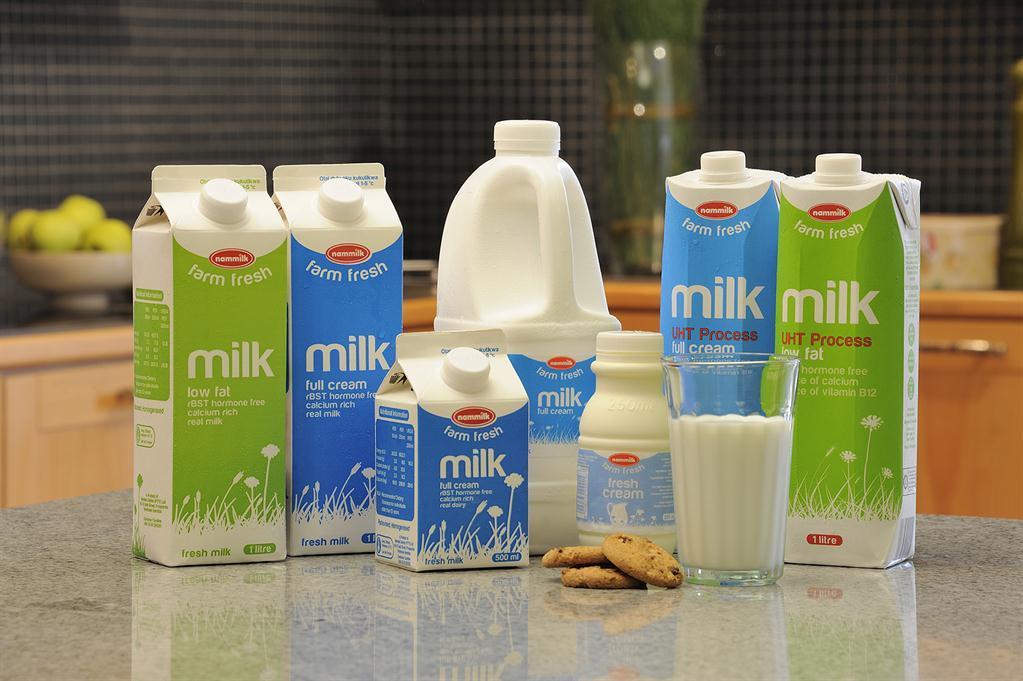Dairy industry in the doldrums
Because of the drought of the past few years four producers have left the industry.
ELLANIE SMIT
The ongoing drought has hit Namibia’s dairy industry hard. A shortage of fodder has led to unsustainable feed prices and a 500 000-litre decline in production over the three months from July to September.
The difficult conditions in which the dairy industry is operating have already resulted in four dairy farmers closing operations in the last 12 months and with the Hardap Dam nearly empty, further closures are a real possibility.
The managing director of Namibia Dairies, Gunther Ling, says the impact of the drought is very serious for the dairy industry.
“Fodder shortages leading to unsustainable feed prices [threaten] the existence of not just dairy farmers but all farming operations in Namibia. Raw milk production in Namibia is significantly reduced year-on-year, while cream supply is also under pressure.”
Ling says raw milk production has declined by 1.1 million litres, or 6%, when comparing the nine-month period from January to September to the same period last year.
“The alarming part is that half of the 1.1 million litres declined over only the last three months, mainly due to the drought.”
Ling says Namibia Dairies currently procures raw milk from 14 dairy farms, including its own Mariental Superfarm which contributes up to 60% of the product.
Because of the drought of the past few years four producers have left the industry, he adds.
“It is estimated that 1 500 direct jobs are established in the local dairy industry. About ten employees are needed on a smaller dairy farm; hence the closure of four farms already means that 40 people have lost their jobs potentially.”
The decline in milk production is due to poor rainfall received this year, which resulted in unfavourable grazing conditions and reduced the availability of animal feeds.
According to Ling the exact increase in feed costs depends on which type of feed is used by producers, but the overall increase in feed costs due to the drought is about 50%.
The dairy industry is highly dependent on feed to increase milk production. In 2018, feed costs increased by 72.9%, while the producer price of raw milk was reduced twice.
According to Ling there have been no price cuts for producers this year. “There has been a price increase of 30 cents per litre since September 2018.”
Referring to the low level of the Hardap Dam, Ling said if there is no inflow into the dam by January 2020, it would have very serious impacts on fodder and water availability to dairy producers near Mariental, including the Superfarm, which would further reduce milk availability.
By the end of October the dam was only 12.3% full.
Apart from the drought, another challenge facing the industry is import competition.
Ling says no industry protection has been implemented for the dairy industry yet.
According to him the total market size for UHT milk, fresh milk and yoghurt in Namibia is 38 million litres per year. Of this, 62% is imported while 38% is produced locally.
Last year the dairy industry was in dire straits following a surge of cheap South African UHT-treated milk products into the market.
“There is no such thing as infant industry protection (IIP) for local dairy production; that was stopped in 2012. Also, the last efforts of quantitative support measures by government and industry were only valid for 12 months, ending August 2014.
“Namibian borders have been completely open for the past few years for any dairy products to enter into Namibia at any time, at any volumes, at any price. Meanwhile, neighbouring countries like Botswana, Zimbabwe, Zambia and Angola have certain trade barriers in place to protect their own local dairy industries against imports,” Ling told Namibian Sun at the time.
It was estimated last year that the total dairy volumes sold in Namibia, local and imported products alike, accounted for less than 1% of the South African market size. To put this into perspective, it means that South Africa needs only three days to produce the volume of milk that Namibia consumes in a full year.
The ongoing drought has hit Namibia’s dairy industry hard. A shortage of fodder has led to unsustainable feed prices and a 500 000-litre decline in production over the three months from July to September.
The difficult conditions in which the dairy industry is operating have already resulted in four dairy farmers closing operations in the last 12 months and with the Hardap Dam nearly empty, further closures are a real possibility.
The managing director of Namibia Dairies, Gunther Ling, says the impact of the drought is very serious for the dairy industry.
“Fodder shortages leading to unsustainable feed prices [threaten] the existence of not just dairy farmers but all farming operations in Namibia. Raw milk production in Namibia is significantly reduced year-on-year, while cream supply is also under pressure.”
Ling says raw milk production has declined by 1.1 million litres, or 6%, when comparing the nine-month period from January to September to the same period last year.
“The alarming part is that half of the 1.1 million litres declined over only the last three months, mainly due to the drought.”
Ling says Namibia Dairies currently procures raw milk from 14 dairy farms, including its own Mariental Superfarm which contributes up to 60% of the product.
Because of the drought of the past few years four producers have left the industry, he adds.
“It is estimated that 1 500 direct jobs are established in the local dairy industry. About ten employees are needed on a smaller dairy farm; hence the closure of four farms already means that 40 people have lost their jobs potentially.”
The decline in milk production is due to poor rainfall received this year, which resulted in unfavourable grazing conditions and reduced the availability of animal feeds.
According to Ling the exact increase in feed costs depends on which type of feed is used by producers, but the overall increase in feed costs due to the drought is about 50%.
The dairy industry is highly dependent on feed to increase milk production. In 2018, feed costs increased by 72.9%, while the producer price of raw milk was reduced twice.
According to Ling there have been no price cuts for producers this year. “There has been a price increase of 30 cents per litre since September 2018.”
Referring to the low level of the Hardap Dam, Ling said if there is no inflow into the dam by January 2020, it would have very serious impacts on fodder and water availability to dairy producers near Mariental, including the Superfarm, which would further reduce milk availability.
By the end of October the dam was only 12.3% full.
Apart from the drought, another challenge facing the industry is import competition.
Ling says no industry protection has been implemented for the dairy industry yet.
According to him the total market size for UHT milk, fresh milk and yoghurt in Namibia is 38 million litres per year. Of this, 62% is imported while 38% is produced locally.
Last year the dairy industry was in dire straits following a surge of cheap South African UHT-treated milk products into the market.
“There is no such thing as infant industry protection (IIP) for local dairy production; that was stopped in 2012. Also, the last efforts of quantitative support measures by government and industry were only valid for 12 months, ending August 2014.
“Namibian borders have been completely open for the past few years for any dairy products to enter into Namibia at any time, at any volumes, at any price. Meanwhile, neighbouring countries like Botswana, Zimbabwe, Zambia and Angola have certain trade barriers in place to protect their own local dairy industries against imports,” Ling told Namibian Sun at the time.
It was estimated last year that the total dairy volumes sold in Namibia, local and imported products alike, accounted for less than 1% of the South African market size. To put this into perspective, it means that South Africa needs only three days to produce the volume of milk that Namibia consumes in a full year.






Kommentaar
Republikein
Geen kommentaar is op hierdie artikel gelaat nie